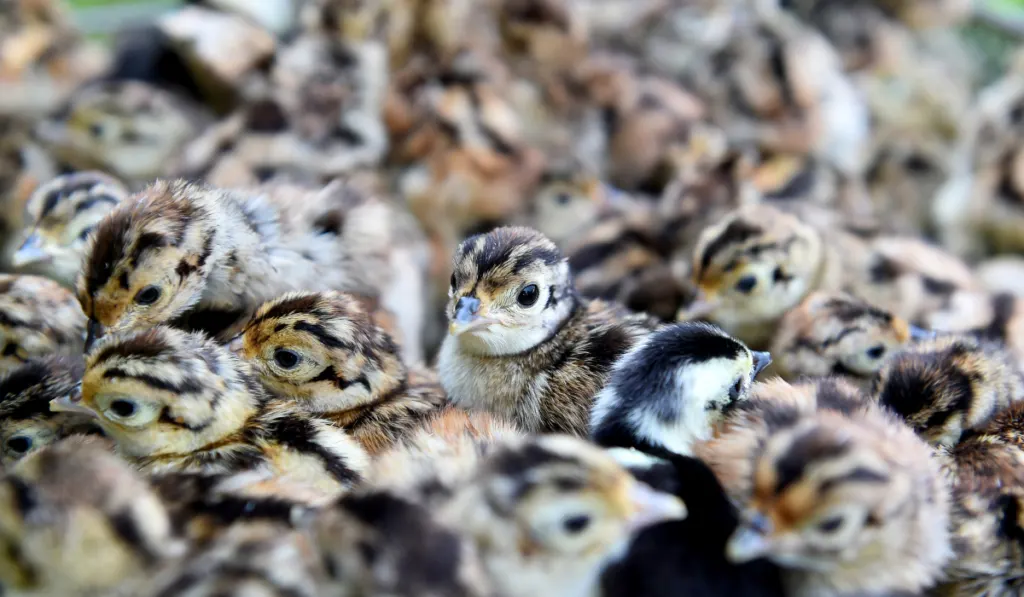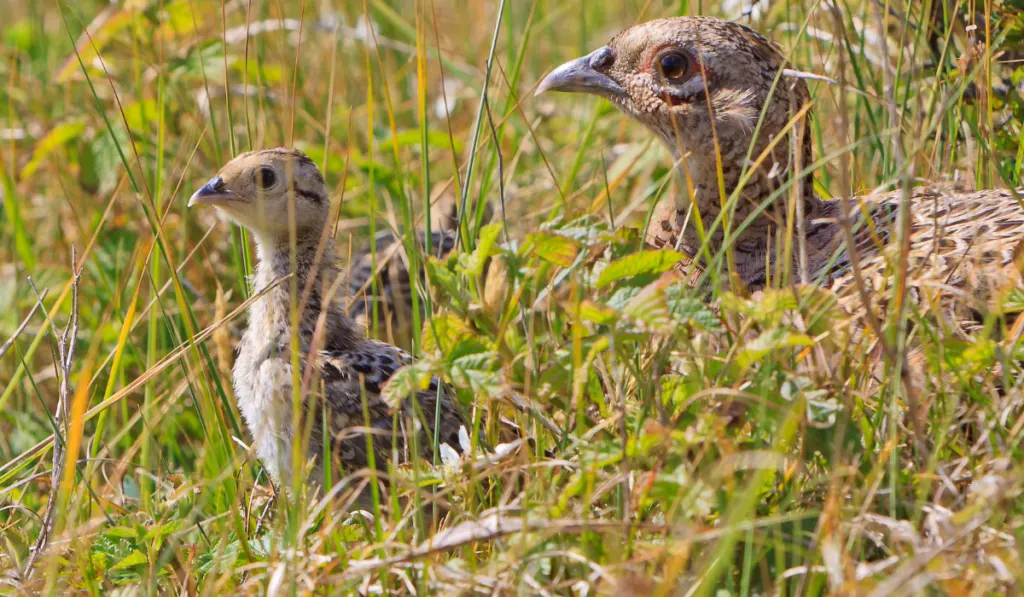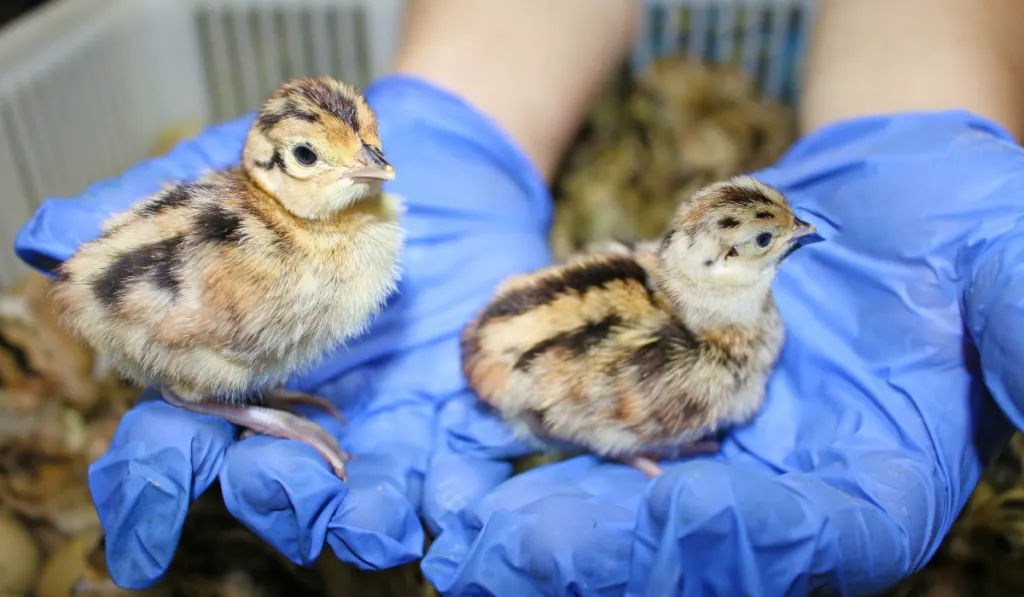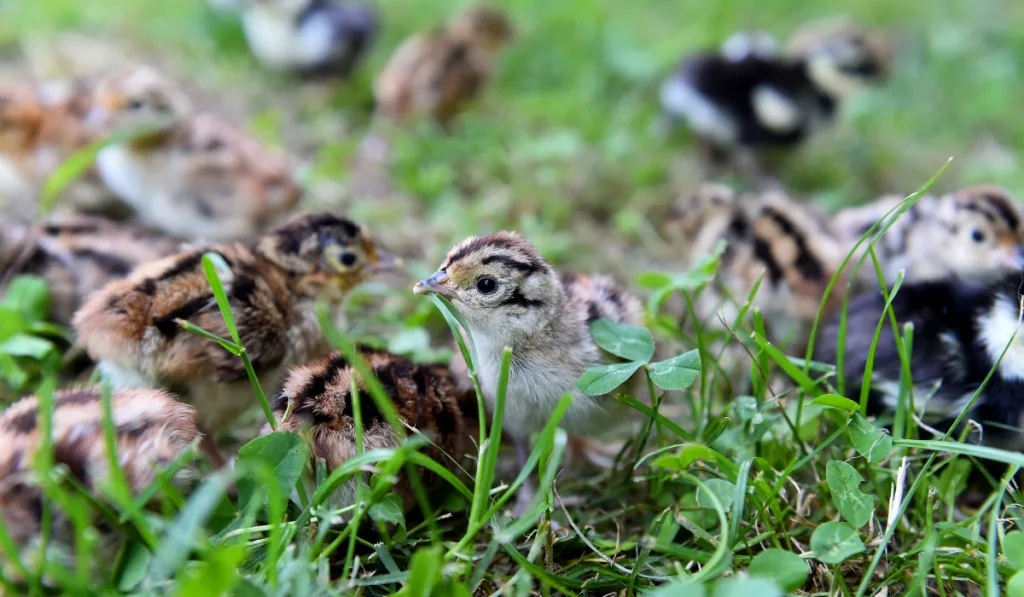A lot of people who raise chicks find out the hard way that unless things are done right, you’re going to see many of them die.
Raising pheasants can be even more challenging because they aren’t as domesticated as chickens, so raising them comes with unique difficulties.
Diagnosing what’s wrong with baby pheasants can be hard as well because they typically try to get away from humans. Getting hold of them isn’t easy.
Baby pheasants die for a lot of the same reasons chicks do. They get the wrong type of feed, they eat too much or too little, or they can’t get warm enough.

To raise your pheasants well and see them into adulthood, here are some reasons why baby pheasants die as well as some steps you can take to keep them happy and healthy.
Table of Contents
1. They Are Too Cold
Young birds need a lot of warmth.
Even if you feel like you’ve got the baby pheasants hot enough, it could be too little. You need to adhere to specific temperatures to keep them from dying. Temperatures need to be around 90-92 degrees Fahrenheit for pheasant chicks.
That’s pretty hot! You’re going to need to buy heat lamps and reflectors to keep the heat in. The number of lamps you buy will depend on how many chicks you’ve got.
It’s crucial to keep the baby pheasants warm in their first few days because their bodies haven’t adjusted to their new environment yet. That’s when they can get sick and, when one baby pheasant gets ill, they can spread the sickness around to the others very quickly.
As baby pheasants grow and their feathers develop, you can start slowly reducing the temperature of your heat lamps.
You’ll know if things are too cold if you see the pheasants piling on top of one another in the middle of their enclosure. If they are warm enough, they’ll be happy just to be side by side instead of on top of each other.
2. They Are Too Warm
Of course, your baby pheasants will die if they’re too hot as well. If your chicks are too hot, they could die of dehydration.
If you’re sure that the temperature isn’t too cold and you see your chicks acting lethargic or scrambling at the sides of the pen, your enclosure could be too hot.

3. Make Sure You’re Using the Right Litter
Don’t make the mistake of thinking you can use almost anything for your baby pheasants’ litter. If their particles in their litter (bedding) are too small, like in sawdust, for example, the birds can eat them and it will kill them because they can’t digest it.
Using a dry material like straw is a better idea. Even better, cover the straw or whatever you’re using for litter with a sheet for the first week or two of their lives so they won’t be tempted to eat it no matter what.
When they can’t get to their litter, they’ll be more likely to only eat the right foods when you give it to them.
4. Nutrition
Aside from temperature, getting the food part of raising baby pheasants is probably the most important. Your baby pheasants aren’t going to eat a whole lot in their first weeks of life, but what they eat is critical. Don’t be lulled into thinking chicken starter will work for pheasants. It won’t.
You need to buy game bird starter. It’s got a higher protein content that will give the pheasants the protein they need to get past the critical chick phase of their lives.
Do what you can to buy the freshest game bird starter possible. If it’s been sitting around for months or years, it may have lost a lot of its nutritional value.
As a result, the birds might not get the food enriched with vitamins that they need to build healthy immune systems.

5. The Size of the Pen
If your pen is too small, the birds can die of overcrowding and stress. If your baby pheasants are constantly being pushed around or trampled, it’s easier for them to succumb to even minor injuries.
Baby pheasants need enough room to move around without spiking their anxiety. You can spot stressed birds if they are constantly running or making a lot of noise.
6. Prevent Baby Pheasants from Turning On Each Other
Remember, these aren’t chickens. Pheasants are game birds and come with unique challenges. One thing new owners can struggle with is seeing some of their birds turn on others and start attacking and even cannibalizing other baby birds.
This is something that happens in the wild, but it’s even more of a problem for game birds raised in captivity.
It starts with things like feather pulling and can get worse from there. Even if the birds survive, without proper feathers they won’t last for too long when they finally make it outside.
To combat fighting, you should first make sure you have enough space for the birds. Another thing that you can do is make the brooder area darker.
Cover windows in the garage, barn, or wherever else you’re keeping them. Give them only enough light to see water and food. This makes it harder for dominant birds to spot weaker birds and will reduce the chances of any attacks.

7. Let Them Outside Early and Often
Exposing baby pheasants at the appropriate age is vital to their long-term health. Certainly, putting them outside before they’re ready is a recipe for disaster. They don’t have the down required to protect them from the elements. The first bit of cold or rain can take them out.
However, at around five weeks old, the baby pheasants should start getting outside for at least a few hours a day. You can start to dial back the heat which will promote faster feather growth and good exercise.
Following these tips and avoiding these pitfalls will help you have greater success in raising baby pheasants. Do your best and make small adjustments along the way as necessary.
